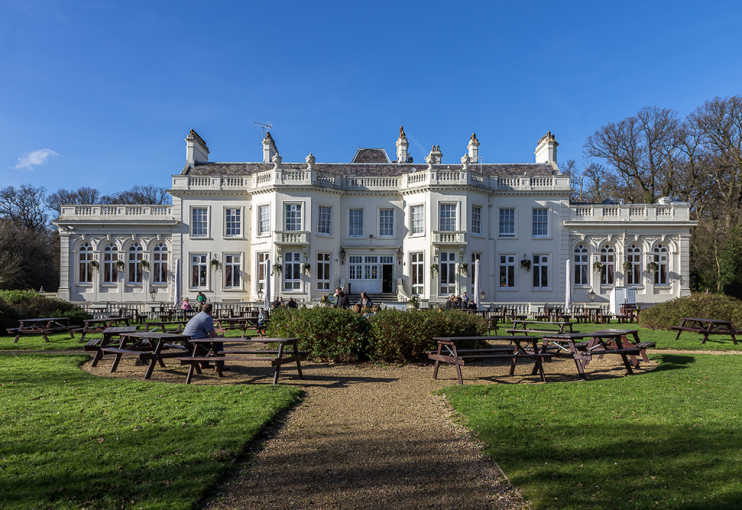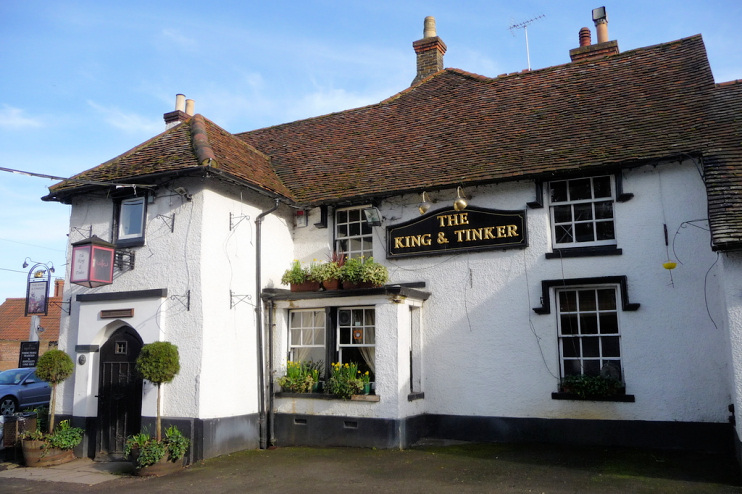Whitewebbs
Whitewebbs, Enfield
A country park and former golf course situated two miles north of Enfield Town on the east side of Crews Hill

This was the estate of a family named Whitewebb, which had originally meant ‘a weaver of white cloth’. A mansion called Whitewebbs (also spelt as White Webbs) stood here from the mid-16th century and in 1570 it was granted to Robert Huicke, physician to Henry VIII and Elizabeth I. A small group of cottages coalesced around the mansion over a period of decades. The Gunpowder Plot was said to have been hatched at Whitewebbs in 1605, though this claim is also made for Eastbury manor house in Upney, among other places.
Land to the north of Whitewebbs Road became part of Theobalds Park on its enclosure in 1611 and was later turned over to farming. Following the much later enclosure of Enfield Chase, Dr Abraham Wilkinson established the 134-acre Whitewebbs Farm, which he subsequently enlarged, demolishing the old mansion and building a new one in 1791. Shown in the photograph above,* this Whitewebbs was réorganisé in the style of a French château in 1881.
A pumping station was built in 1898 to feed a loop of the New River and is now home to Whitewebbs museum of transport, which also hosts antiques fairs, model railway exhibitions and other events. The museum is usually open on Tuesdays and the last Sunday of each month.
Enfield council purchased the Whitewebbs estate from Sir Duncan Orr-Lewis in 1931 and divided it into a municipal golf course and a 196-acre public park, with open space and ancient woodland in which there are streams and small lakes. After the sale, Whitewebbs House served for many years as an old people’s home but is now a Toby carvery.
The council closed the golf course in 2021 and subsequently selected Tottenham Hotspur Football Club to “regenerate” the site. Most of the site will remain publicly accessible and around half will be restored to historic parkland. However, a significant chunk will become “managed access for the new Women’s and Girls’ Football Academy and the [also new] Sports Turf Academy.” At the time of writing (May 2024) local campaigners have been unsuccessful in their attempts to prevent this change of use.

Shown in the photo above, the King and Tinker public house probably dates from the reign of James I (1603–25), though it was altered in the 18th and 19th centuries. Its name derives from an old ballad that tells of an occasion when King James is separated from his courtiers while out hunting and takes refuge in an alehouse, where he sets to drinking with John of the Vale, a mender of kettles. John is unaware of his companion’s exalted identity until James reveals himself and (for no good reason) makes the tinker a knight. The encounter is usually said to have occurred in Windsor Forest or out here on Enfield Chase.
Either way, this pub is certainly named after the ballad, but that’s as far as the true story goes. As Thomas Percy observes in his Reliques, “It has been a favourite subject with our English ballad-makers to represent our kings conversing, either by accident or design, with the meanest of their subjects.” FJ Child adds: “It is obvious that a legend of immemorial antiquity has been transferred by successive minstrels or story-tellers to the reigning monarch of their own times.” And in The Old Inns of Old England, Charles Harper points out that “Haroun-al-Raschid is found, in the Arabian Nights, in circumstances not dissimilar.”
Three hundred yards north-west of the King and Tinker, the 17th-century, hipped-roofed Whitewebbs farmhouse and its outbuildings (which include a later-17th-century timber-framed barn) have recently been renovated and the gardens have been relandscaped, perhaps with the aim of adding another million or so to the asking price.
